
Ancient Wisdom, Contemporary Furniture: Designing for Climate
14-Dec-2023
Photo credit: Fernando Laposse
For centuries, ancient and indigenous ecological knowledge have sustained cultures in harmony with nature. Eighty percent of our Earth's biodiversity is held in indigenous peoples’ territory. Yet a belief persists that traditional ecological knowledge is mere folklore – instead of, as noted by Bazile Panek, “a science in its own right, which has been through thousands of years of experimentation and trial and error." Panek is a Native American researcher and indigenous consultant for the Institute for Tribal Environmental Professionals.
We live in a fast-paced world, obsessed with the future and with the next big new thing. This is amply illustrated, let’s say, by our sonic-speed obsession with Artificial Intelligence. Many – including within the furniture industry – are trying to figure out how these latest technologies will impact our lives, work, and the planet. But what if, in addition, in looking to ‘the latest,’ we also took time to look back – how does ancient and indigenous ecological knowledge help catapult us forward?
Embracing Ancestral Knowledge in the Climate Era
In recent years, further spurred by the pandemic, many designers have (re)turned to the past, reclaiming cultural identities, seeking inspiration from ancestors, local communities, and indigenous people. These designers are exploring ancient crafts, materials and practices with an eye toward addressing climate change and public health challenges. In the process they are also helping to support local communities and cultural heritage.
This article – the sixth in our Furniture in the New Climate Economy series - explores real-life innovations by furniture designers and small brands with a particular focus – how adapting ancient, low-tech yet practical solutions holds promise for new practices that address climate change. Do these ancient, low-tech ways provide valuable insights into, and templates for, large-scale furniture manufacturing today?
Let's take a look at six examples, ranging from age-old Japanese building principles – to ancient woodland management – to preservation of ancestral seeds and crafts – and more –
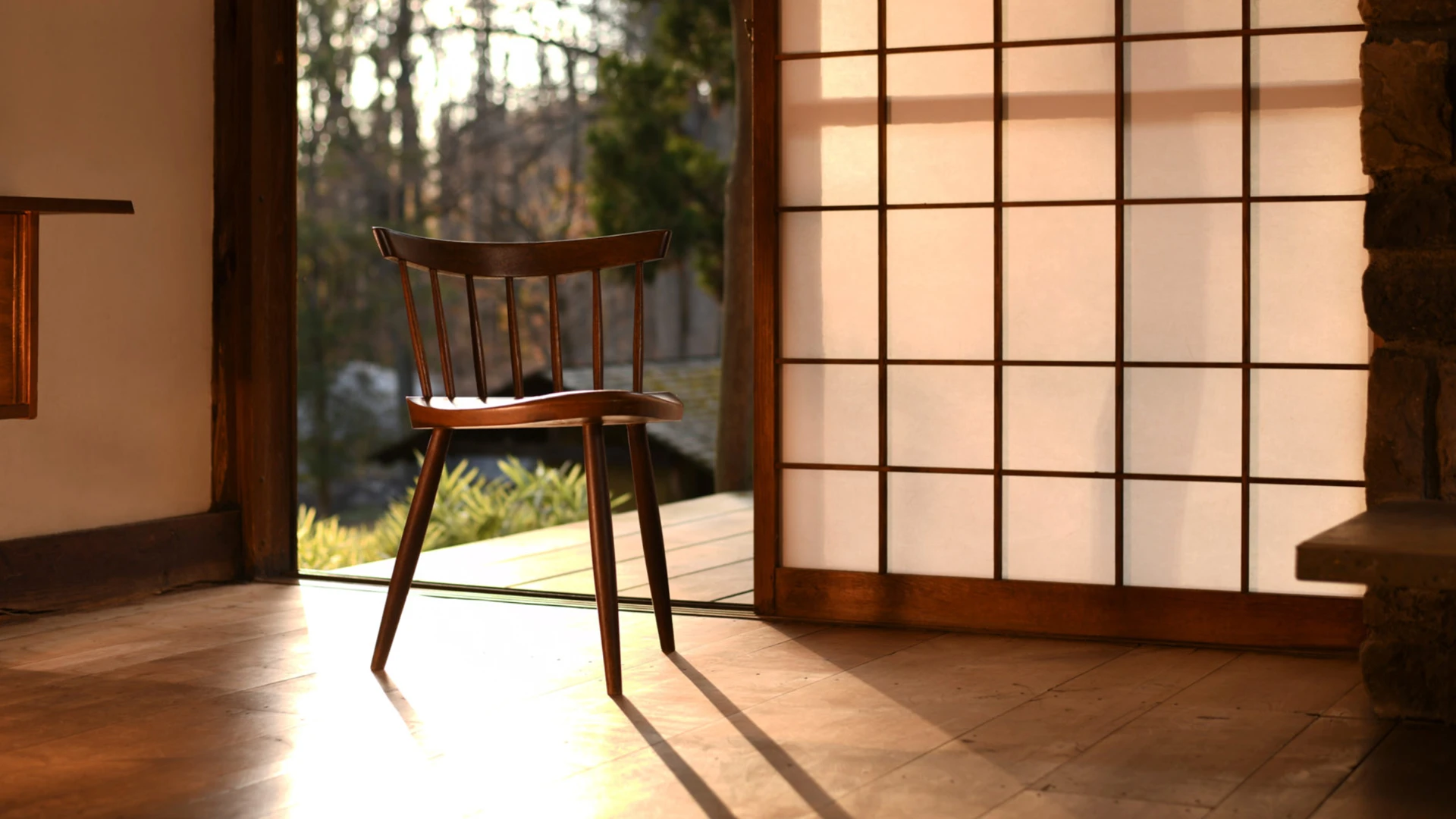
George Katsutoshi Nakashima Chair by Knoll
In the Spirit of Ki-Mon
We want to start by recalling the meaningful, time-transcendent work of George Katsutoshi Nakashima – American woodworker, architect, furniture maker and the father of the American craft movement. Nakashima embraced the traditional Japanese building principles of 'ki-mon' – respect for the natural landscape and use of indigenous materials.
Back in the 1950s, at his shop in Pennsylvania, Nakashima repurposed wood by celebrating its untamed forms, reflecting the Japanese reverence for nature. "In a world where manual skills are shunned, we believe in them,” said Nakashima. “We feel that pride in craftsmanship, in producing something of beauty, even out of nature's discards."
"He learned to improvise," according to his daughter, Mira Nakashima, noting that her dad worked first with scrap wood and then with offcuts from a local lumberyard. He didn't draw something on paper and then buy materials, Mira recalled. “It was the other way around. Materials came first, like in traditional old Japanese architecture.”
Looking Forward: Nakashima's principles and philosophy can inspire contemporary furniture designers to embrace wood in its natural form. Further, in the spirit of Nakashima, and with the help of advanced technologies such as digital fabrication and 3D printing, designers can emphasize the use of materials around them. This serves to reduce transportation emissions, minimize waste, and support local economies.
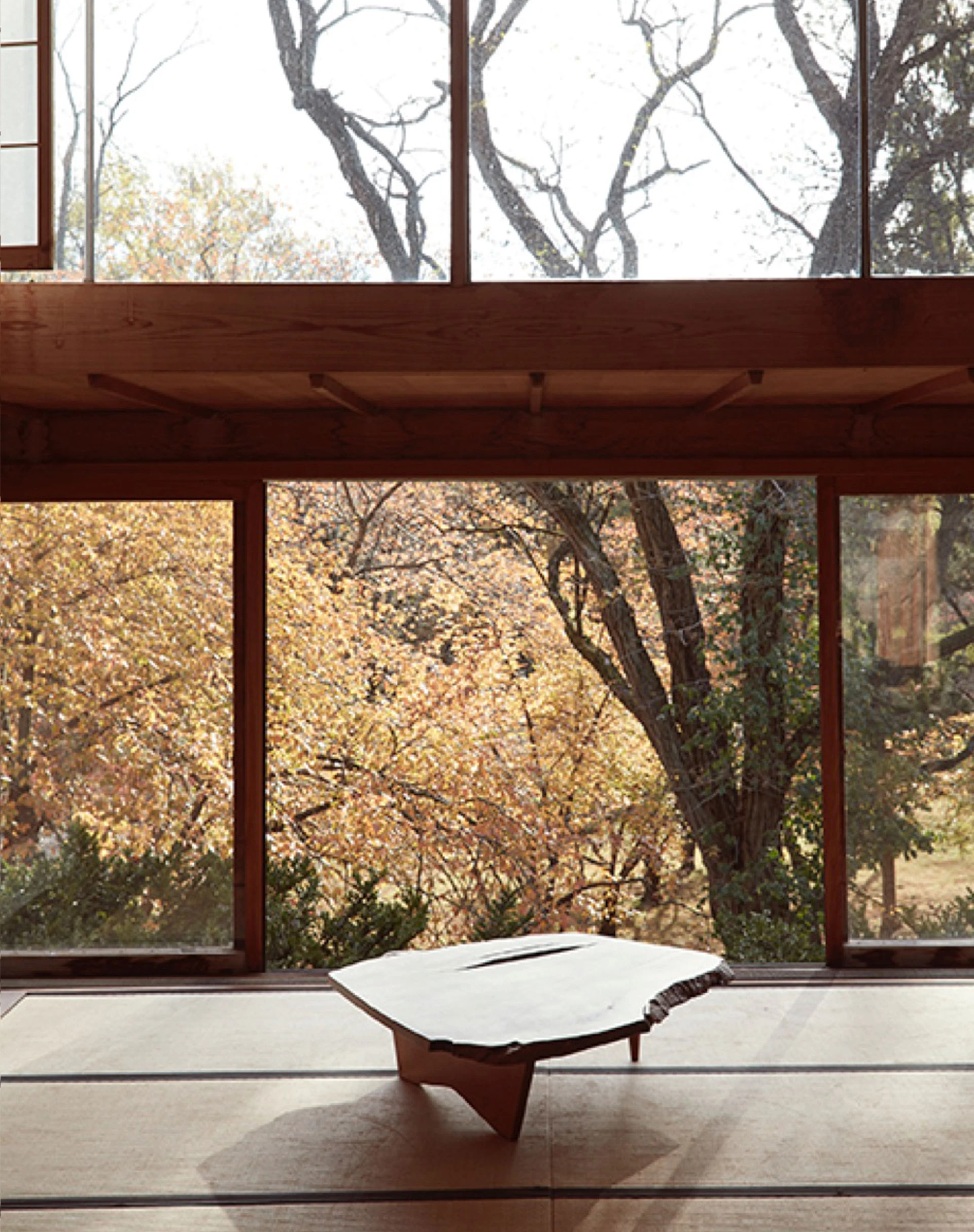
George Katsutoshi Nakashima’s coffee-table
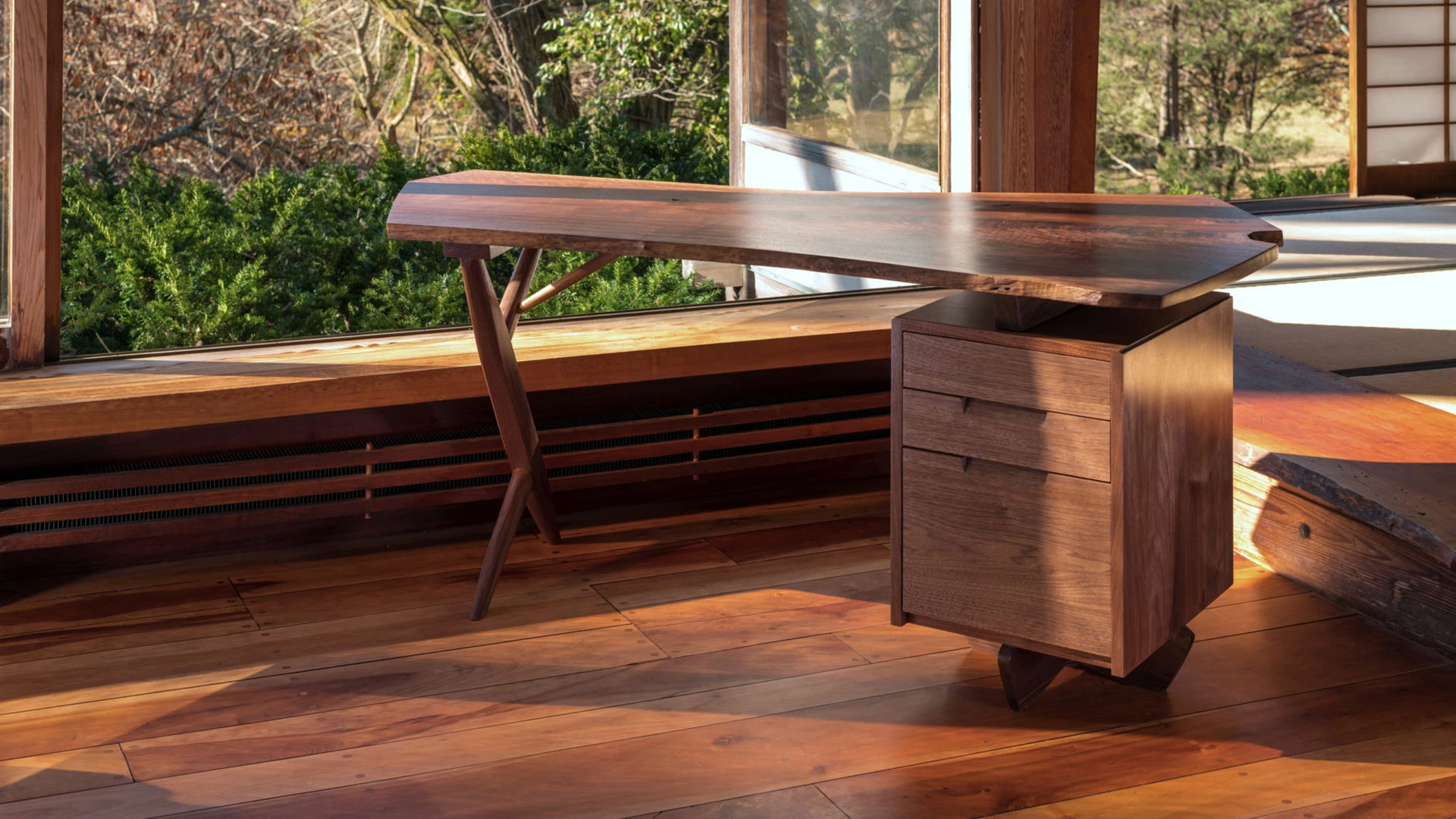
George Katsutoshi Nakashima’s Desk

George Katsutoshi Nakashima
Renaissance of Coppicing
Onto the 21st century! British designer Sebastian Cox spent over a year immersed in learning traditional skills - such as 'bodging craft' and the ancient art of making furniture from coppiced hazel.
Coppicing is a form of woodland management dating back thousands of years, employed by our Neolithic ancestors. It consists of cutting young trees to near ground level so that the remaining stump can sprout new shoots, allowing for repeated growth and harvest cycles without replanting, making it an environmentally friendly practice.
The 1920s saw a dramatic decrease in coppicing. This was due to multiple factors, including the mechanization of agricultural practices after World War I to meet the need for quick, large-scale timber production. This resulted in a significant loss of British flora and fauna.
At this time, wildlife trusts all over Britain are actively promoting the re-introduction of coppicing in their woodlands. The rotation of cutting and regrowth introduces diversity in plant and animal species. Different stages of growth provide habitats for various organisms, contributing to overall biodiversity in the ecosystem.
Looking Forward: Done correctly, coppicing is entirely sustainable. There is a net environmental gain regarding captured CO2 and biodiversity conservation. The revival of this ancient practice can help large-scale furniture manufacturers spur sustainable forest management and ensure a continuous supply of sustainable wood while mitigating climate change.
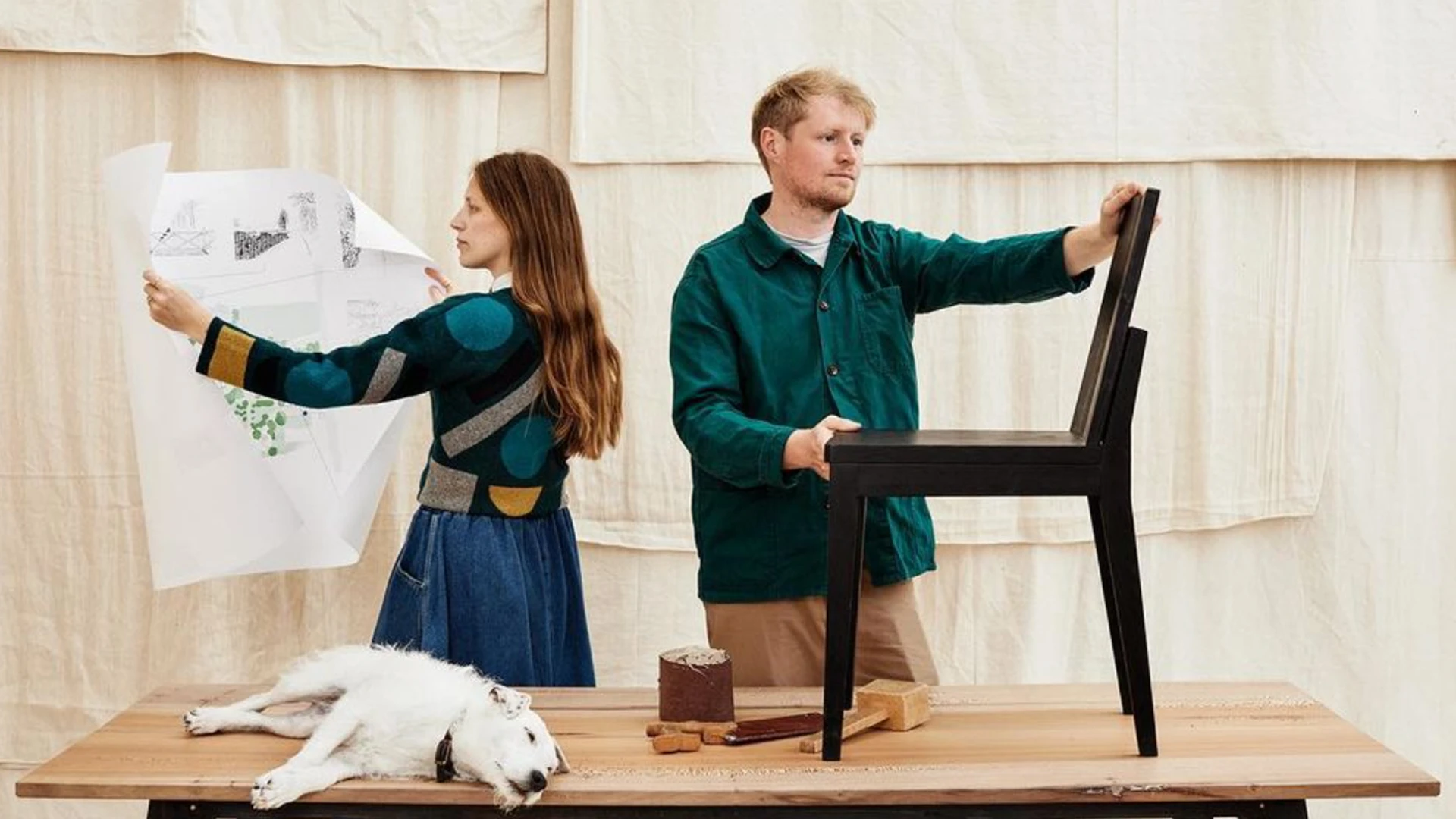
Sebastian and Brogan Cox
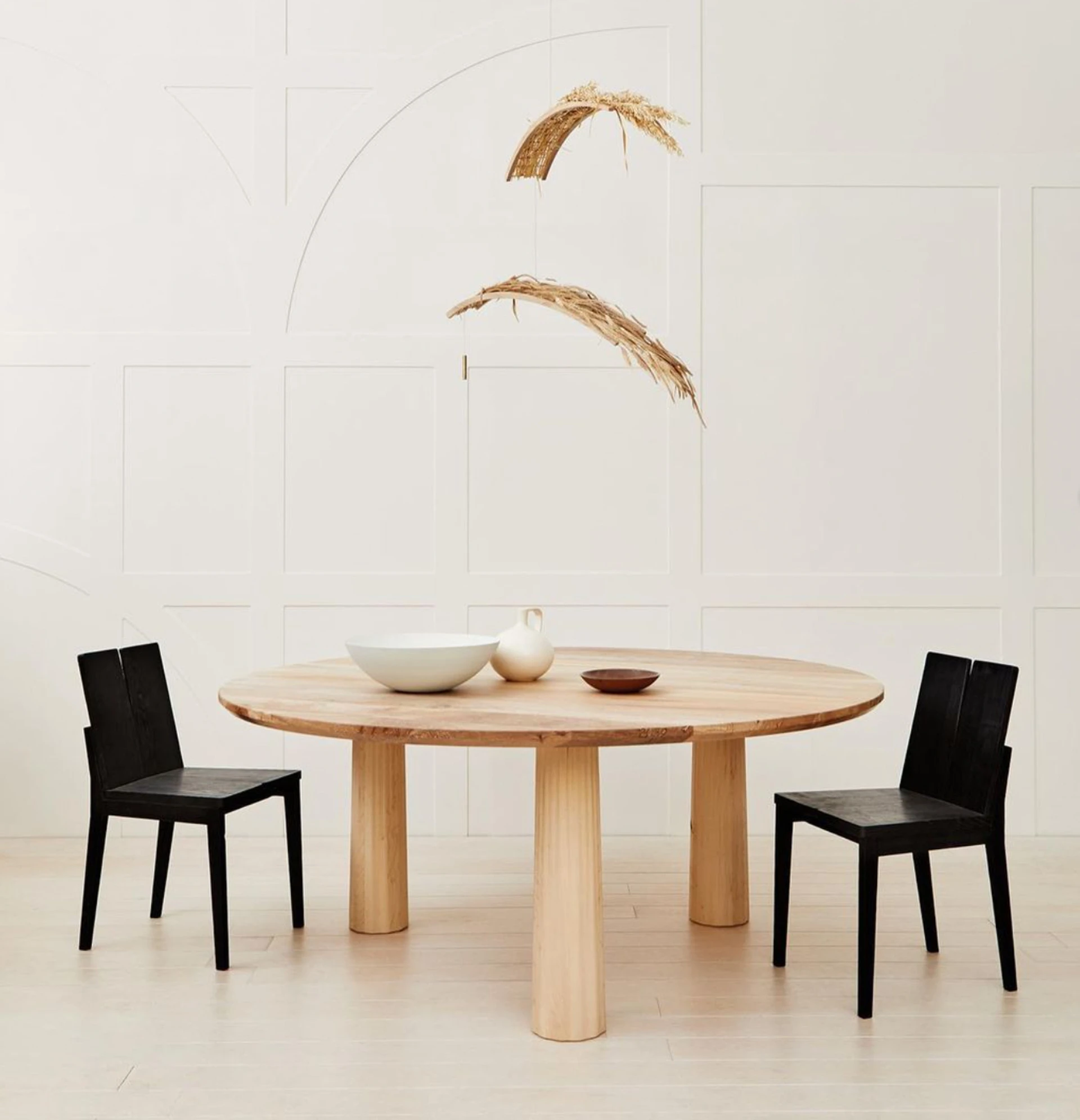
Sendal table by Sebastian Cox
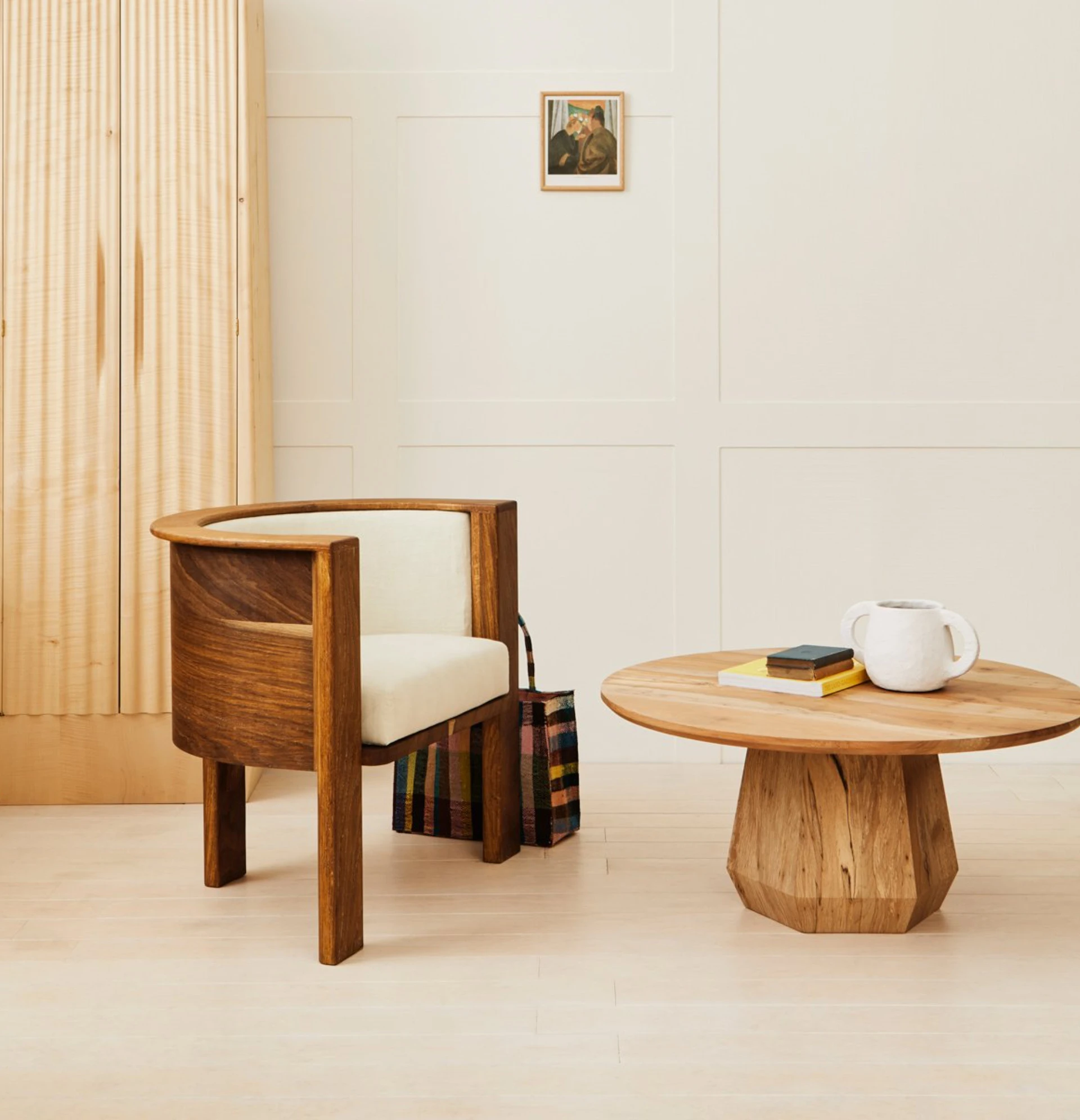
Kerf armchair by Sebastian Cox

Cleft sideboard by Sebastian Cox
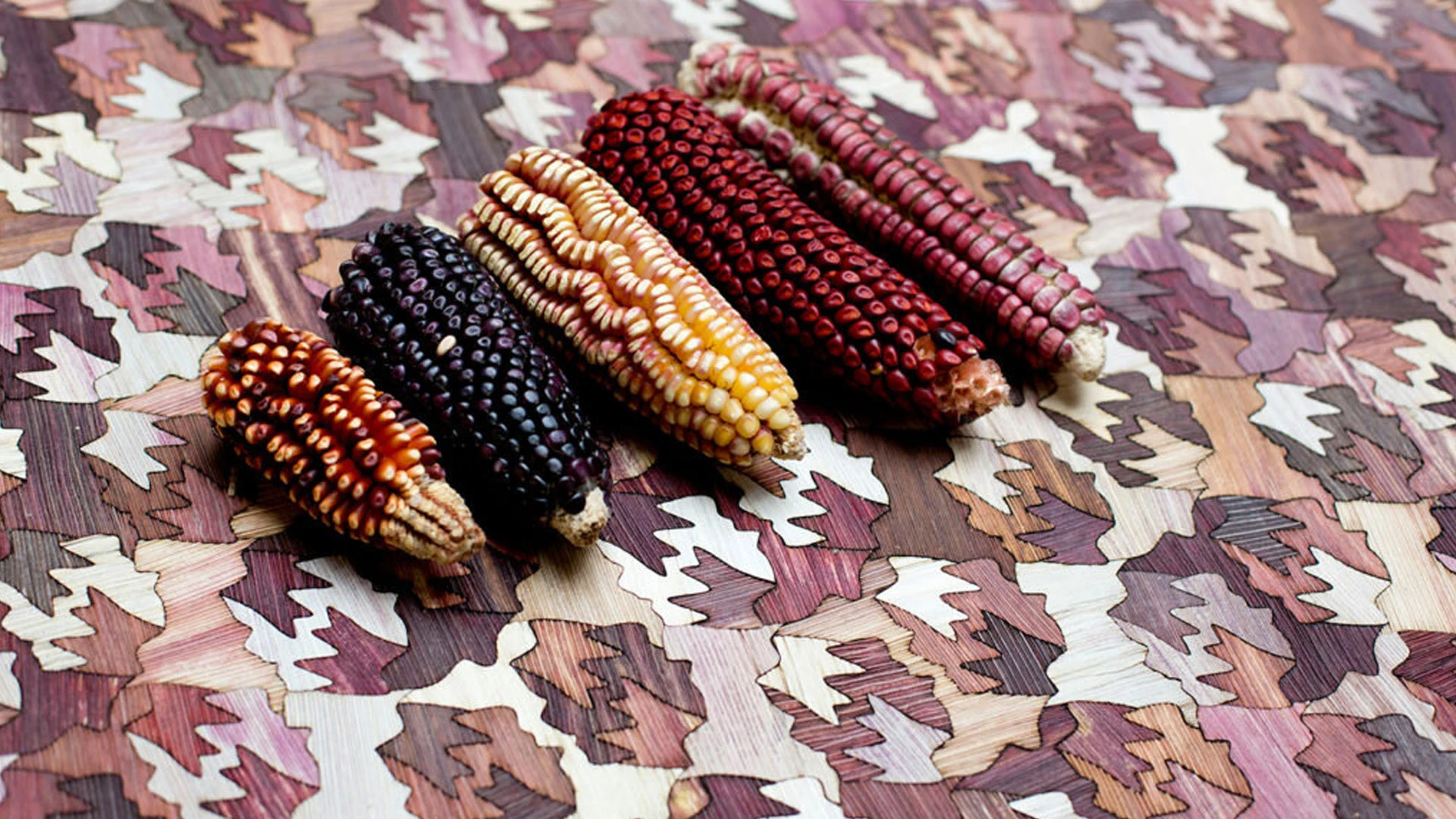
Fernando Laposse uses Mexican corn husks to create a unique veneer
Harvesting Ancestral Seeds
Since 2019, Mexican designer Fernando Laposse has collaborated with local farming communities to develop a unique veneer material for furniture and interior surfaces – using Mexican corn husks, ranging from deep purples to soft creams, reflecting the diversity of shades of corn husks, which is deeply connected to the country's food traditions.
One of Laposse’s aims is to help revive traditional agricultural practices in Mexico, creating a new craft that generates income for impoverished farmers and promotes the preservation of biodiversity. Local farmers effectively bio-designed a range of husk colors using ancestral indigenous knowledge and their unique understanding of this plant.
The choice of corn is not random. Native corn varieties are in fast decline – due to international trade agreements, aggressive use of herbicides and pesticides, and the arrival of highly modified foreign seeds that have devastated the practice of growing native corn across Mexico.
Fernando Laposse stresses the importance of preserving ancestral corn seeds. He calls our attention to ancestral corn's nutritional properties, along with the possibility that it might hold solutions to climate challenges - as varieties of this corn have been bred in scorching and dry conditions for centuries.
Looking Forward: Laposse’s work with corn husks - an abundant agricultural waste material, often discarded or burned – provides a model for repurposing other types of agricultural debris for furniture and furnishings. This, in turn, could spur collaboration between the agricultural and furniture sectors, creating a circular economy in which waste from one industry becomes a resource for another.
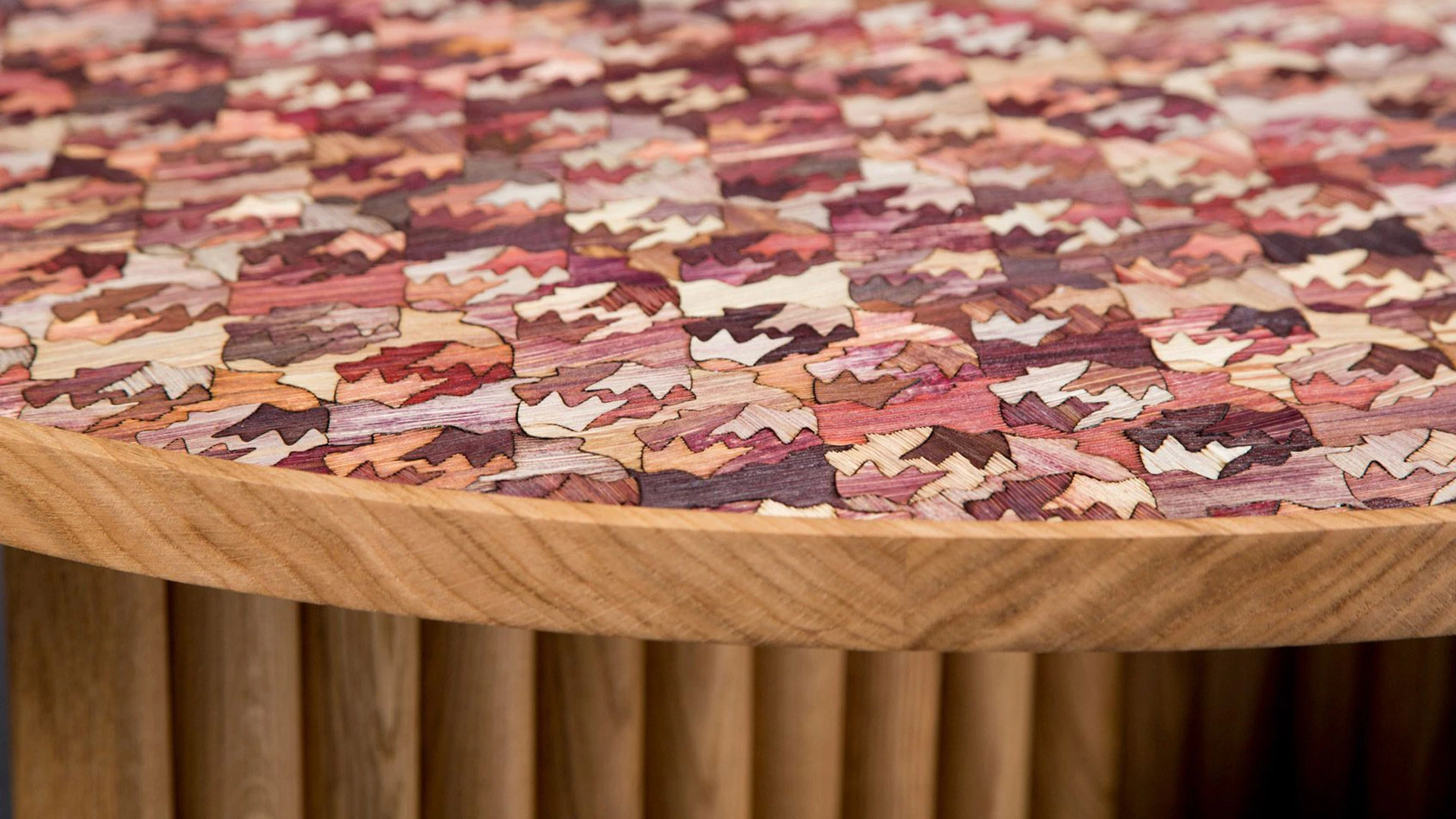
Totomoxtle Legacy table detail by Fernando Laposse
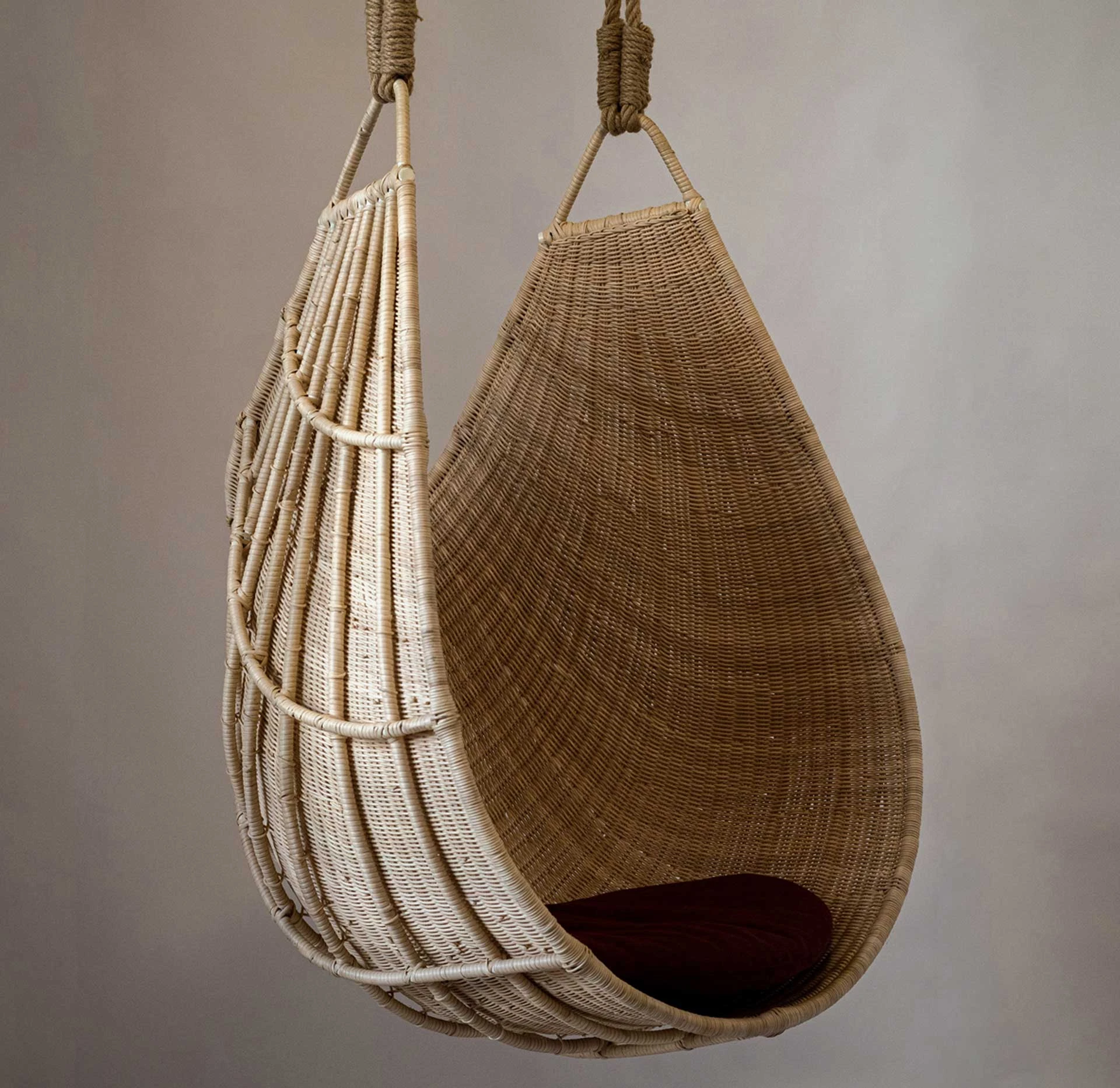
Jamapa Hanging Chair by Balsa
Thriving with Rattan
In 2020, Balsa, a Mexican brand, teamed up with furniture designer Christian Vivanco to create Bajio – a furniture collection made from rattan. Balsa works with artisans expert in natural fibers, helping to preserve their at-risk-of-disappearing knowledge base.
Rattan is a type of climbing plant with a flexible woody stem. It "is one of the most sustainable materials for furniture manufacturing, growing in just 5-7 years, making it a genuinely renewable resource," explains Vivanco. "Manufacturing furniture from rattan is low-tech, not requiring chemicals or excessive energy consumption. It is also durable, and can be recycled after its useful life has ended," he adds. As a type of vine that needs trees to grow, rattan also supports thriving forests.
Weaving rattan is one of the world’s oldest crafts. Throughout history, rattan craftwork has appeared in multiple cultures – with evidence in Neolithic basket weaving, in artworks from early Indian civilizations, and in furniture in the Middle East and the Mediterranean.
Looking Forward: Rattan use by designers and boutique brands provides a template for large-scale furniture manufacturing to explore and promote many other genuinely renewable materials that can be found near to their facilities, adapting the principles of sustainability and local resource utilization that these practices exemplify.

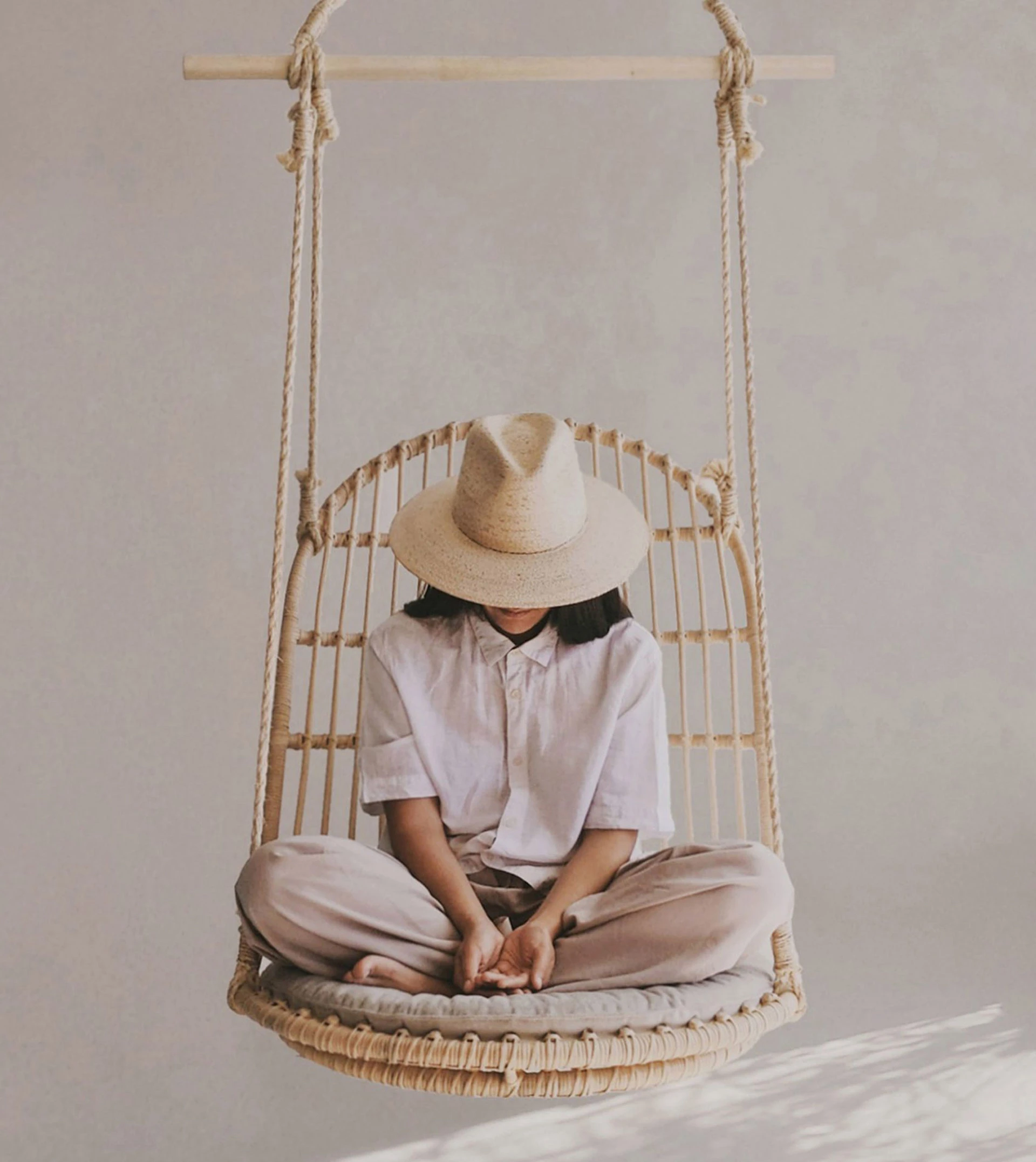
Rattan furniture collection Bajío by Christian Vivanco for Balsa
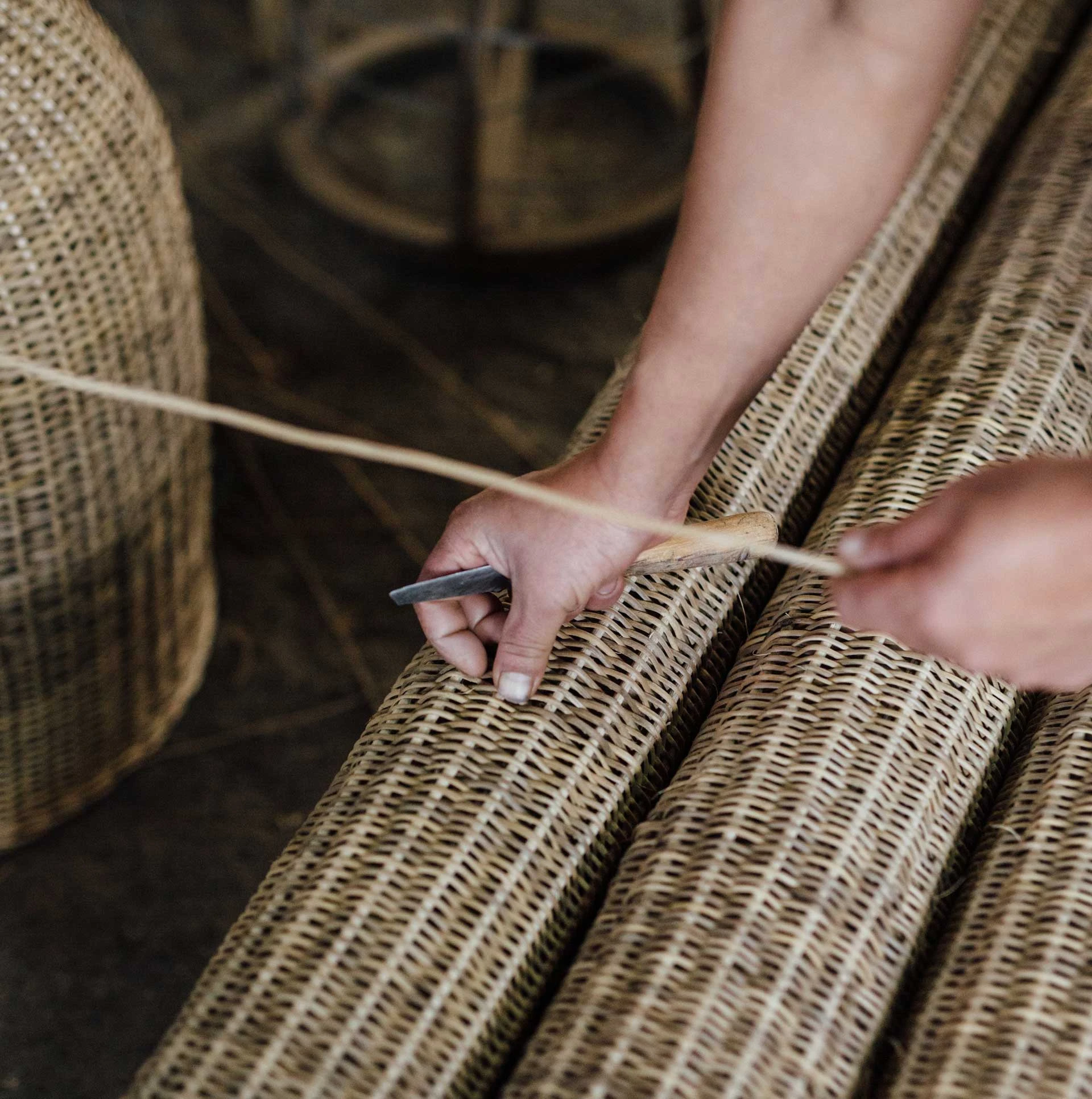
Yaré Fiber furniture by Fango Studio and local artisans
Weaving Biodiversity
In Colombia, designer Francisco Jaramillo, of Fango Studio, teamed up with four local artisans – Norbey, Milca, Steven and Carlos – to create a furniture collection made of yaré fiber. "Yaré is an example of Colombia's great biodiversity”, since fibers indicate the presence of various plant species that contribute to the overall ecosystem health, explains Jaramillo.
Yaré fiber, extracted by indigenous communities in the south of Colombia, is used by local communities to create handicrafts, including hats, brooms, baskets, and furniture. The yaré vine grows attached to trees, boasting abundant aerial roots that can be harvested sustainably. The mother plant remains connected in the canopy, resilient to reap, and producing new roots.
Inspired by these communities, Jaramillo aims to use yaré fibers as a sustainable material, diminishing indiscriminate deforestation and supporting the preservation of the Colombian jungle. With a group of weavers, the designer translates the furniture aesthetics of wooden blocks into "a primitive way to use yaré weaving that reflects these same geometries." Yaré requires no cutting of trees.
Looking Forward: As with rattan, applying yaré fiber to furniture design can inspire larger companies to identify and use similar sustainable fibers in their locality, reducing the carbon footprint associated with transportation and supporting local biodiversity and economies. These practices are highly aligned with global sustainability goals.
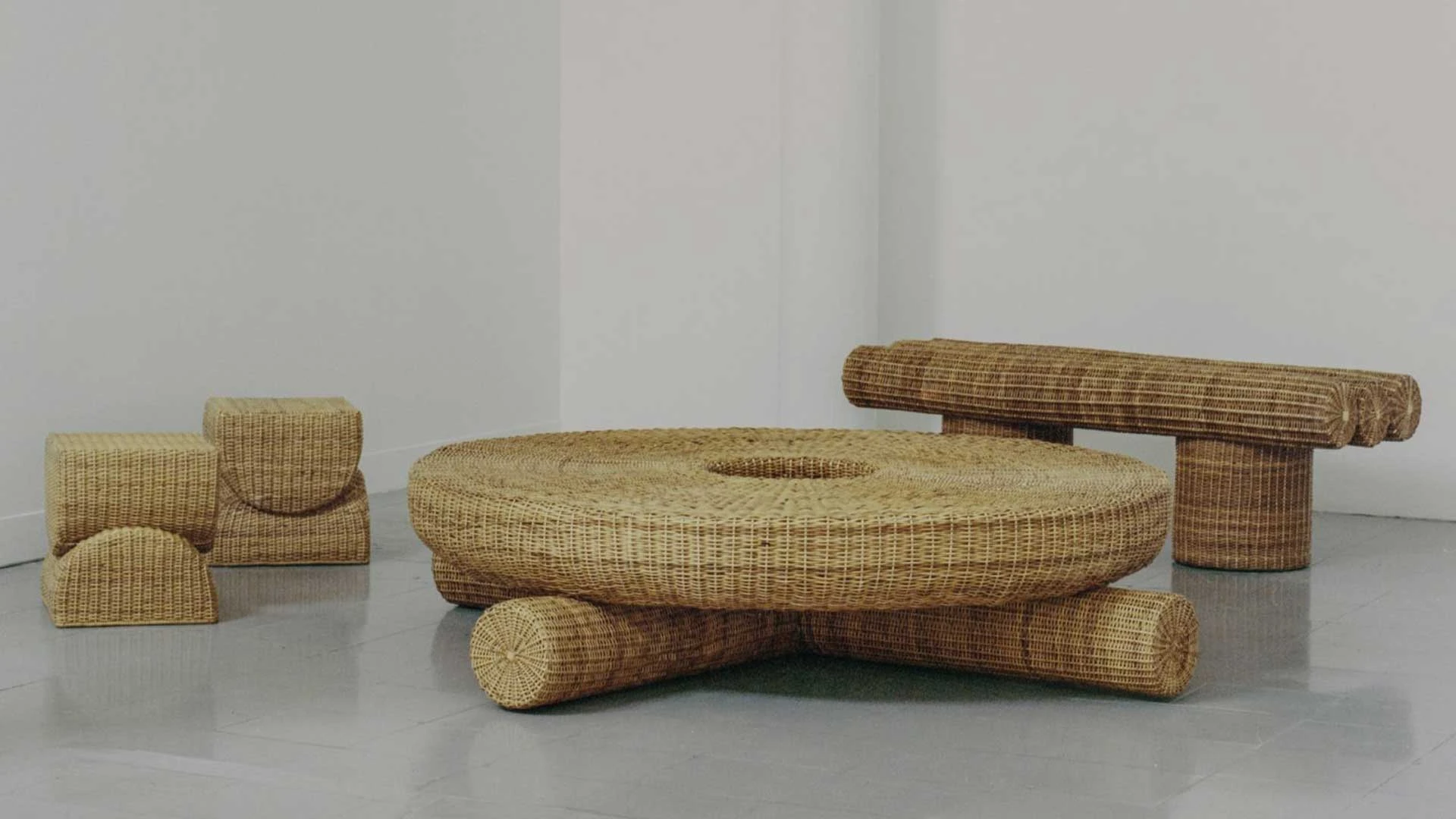
Furniture collection made of yaré fiber by Fango Studio and local artisans
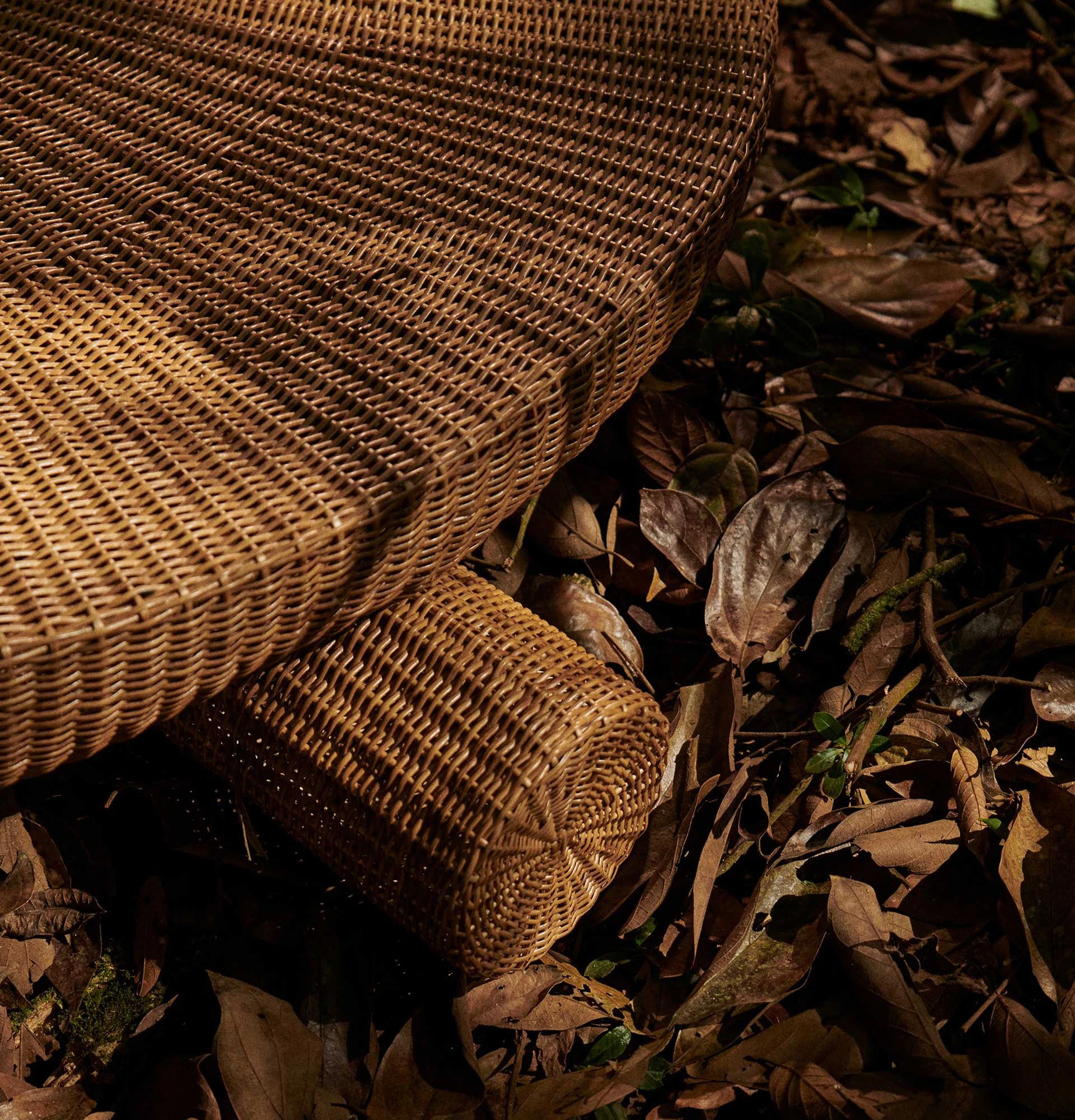
Furniture made of yaré fiber by Fango Studio and local artisans
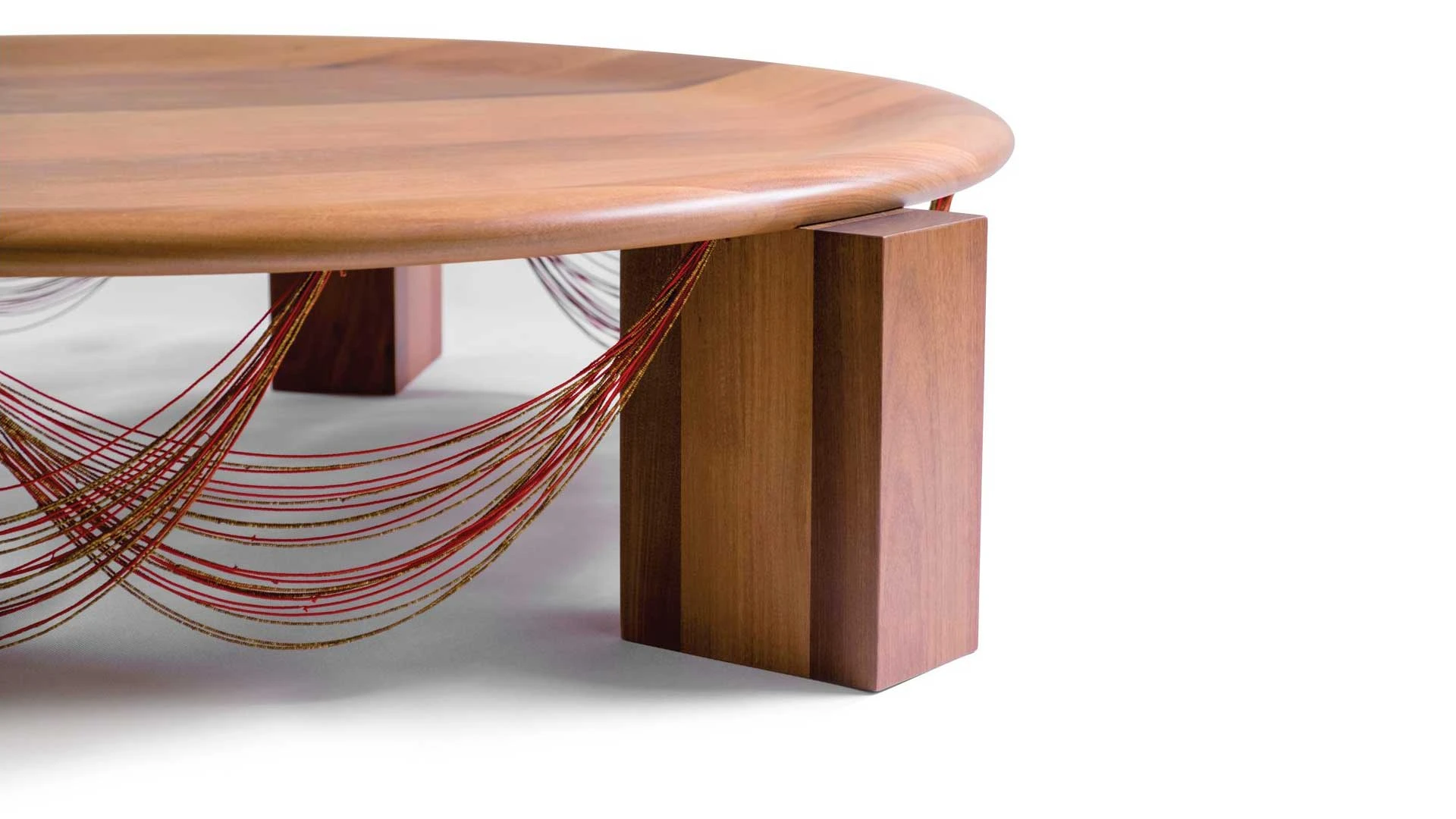
Beiju Table from Xingu Collection Xingu by Maria Fernanda Paes and Kulykirda Mehinak
Supporting the forest guardians
In Brazil, designer Maria Fernanda Paes developed the Xingu Collection – a furniture series in partnership with Mehinako artisans in the Alto Xingu, Mato Grosso region. This collection uses exclusively local materials, including cabreuva wood, straw yarn, woven stems from the buriti palm tree, and natural dyes and pigments.
The Xingu Collection features a swing seat, called the Kaüpuna, which, for example, incorporates buriti yarn that is, by tradition, harvested, cleaned, and dried by Mehinako women; the men, by tradition, contribute the wood for the bench seat, decorated with charcoal and annatto-based graphics.
These local craft techniques, along with non-toxic local materials, act in harmony with the natural ecosystem while helping to support indigenous communities – the best climate activists of all times.
Looking Forward: Paes' collaboration with Mehinako artisans provides a model for integrating indigenous knowledge and local materials into high-end furniture design. They show how to give life to products that respect local traditions and habitats while supporting community livelihoods. It is important to make clear that for large-scale manufacturers, this means exploring sustainable materials that are readily available and abundant in their region. It's not about sourcing specific materials from indigenous communities like the Mehinako in Brazil for global distribution. Instead, it's about adapting the principles of sustainability and local resource utilization that these practices exemplify.
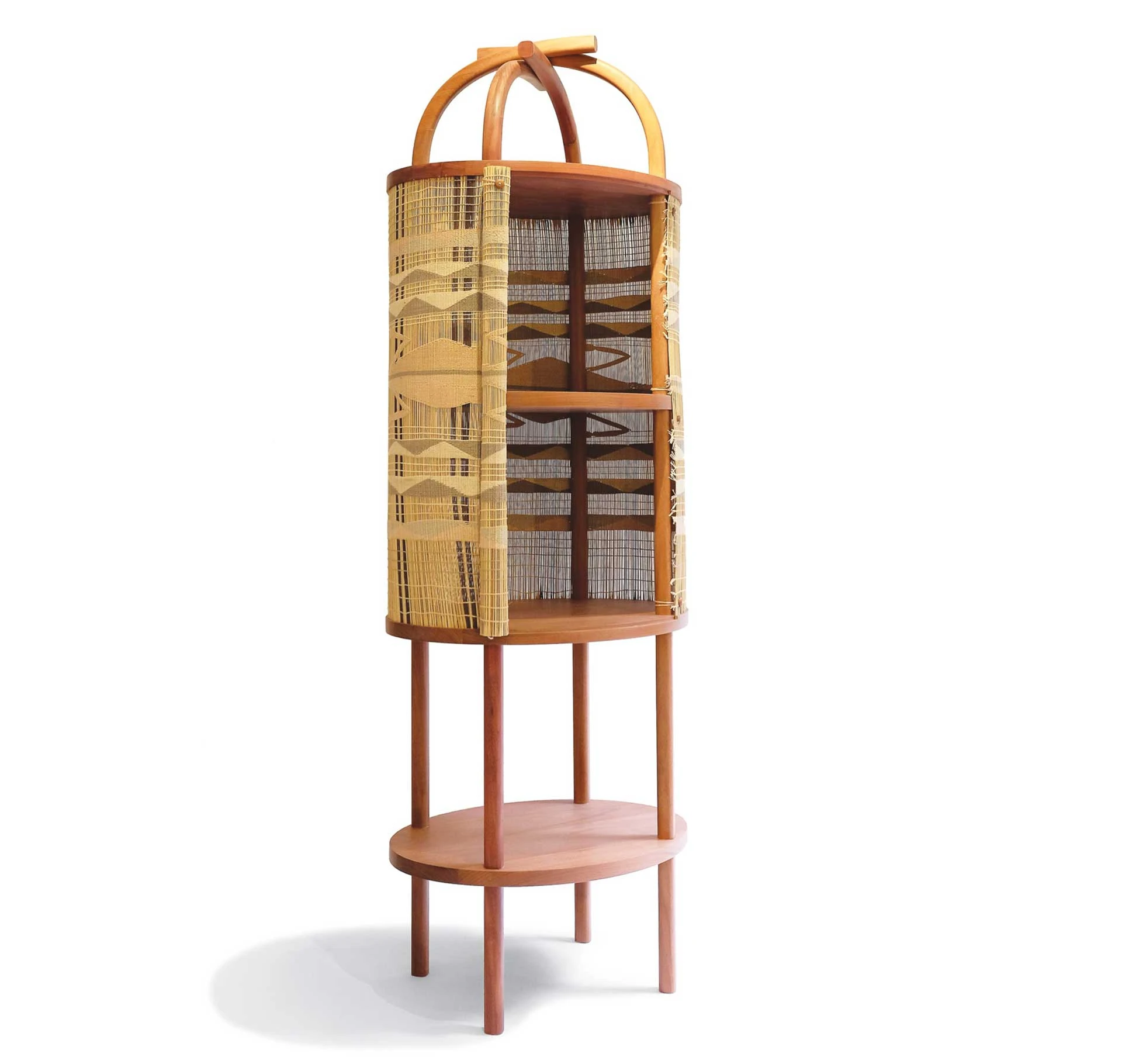
The Oca closet, Xingu Collection by Maria Fernanda and Kulykirda Mehinak
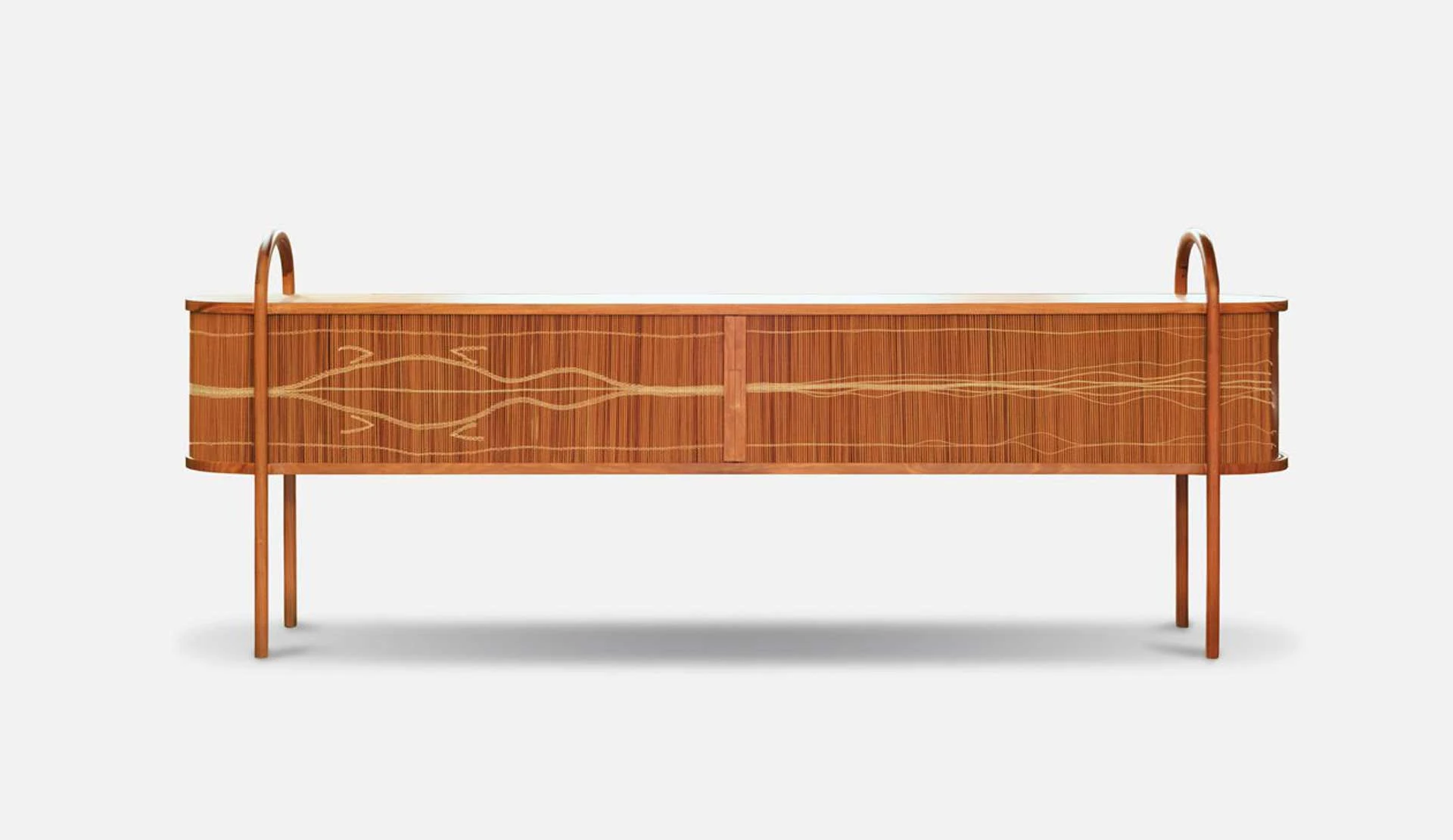
The Shelter credenza, Xingu Collection by Maria Fernanda Paes and Kulykirda Mehinak (photo)
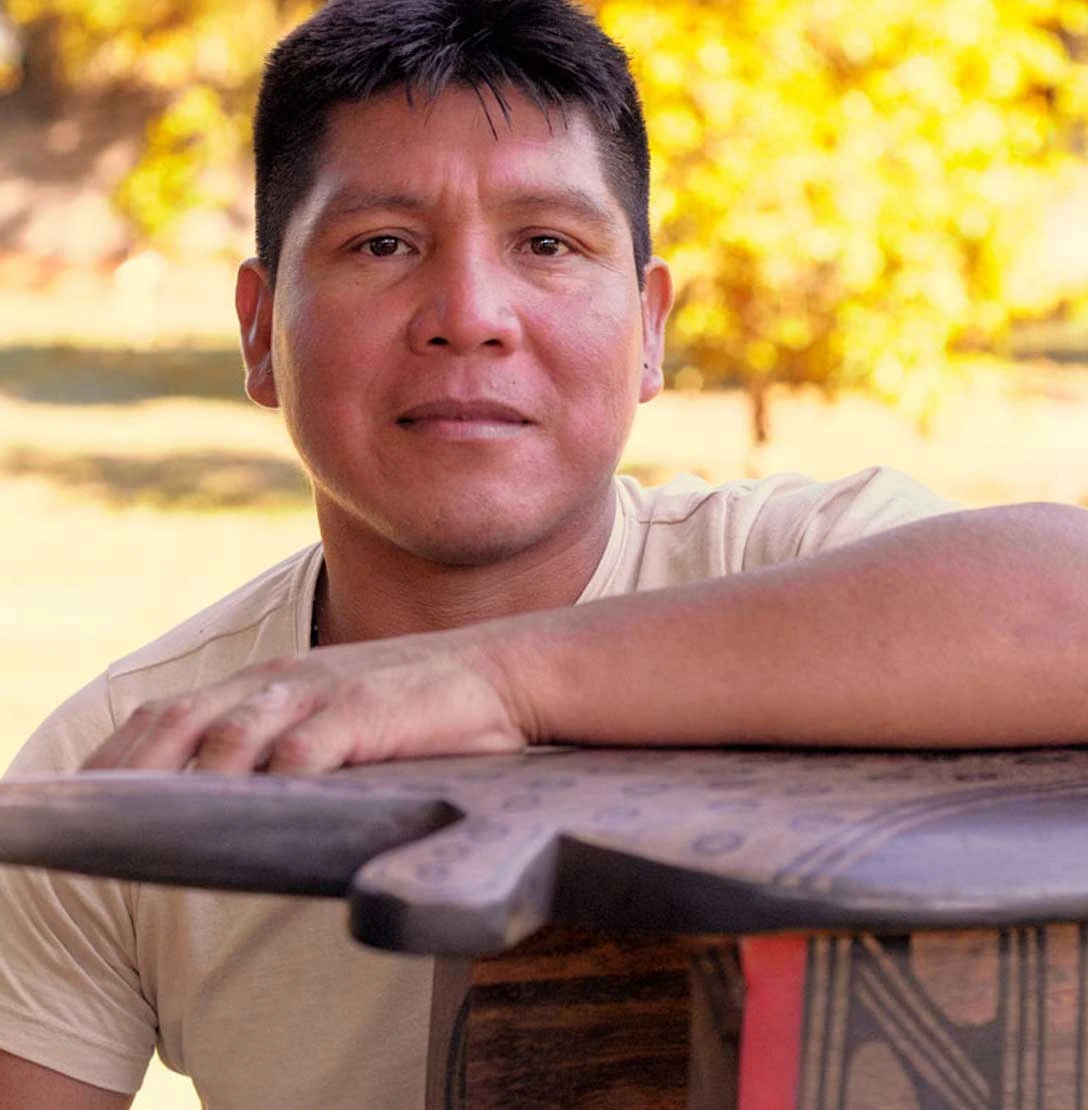
CHALLENGES
Turning to the past to address climate change – applying ancient techniques to transform large-scale, climate-positive furniture manufacturing – presents significant challenges along with its many promising opportunities.
The key challenge lies in scaling up ancient practices without replicating the negative impacts of mass production, such as unsustainable harvesting and long-distance transportation that generates high carbon emissions, using chemicals for processing, etc.
Where appropriate, collaboration with local communities and artisans can blend traditional skills with modern techniques. Collaborations should be ethical, ensuring fair compensation and recognition and avoiding cultural appropriation or exploitation, and safeguarding the intellectual property of communities, notes Julia Watson, an Australian author, researcher and Lo-Tek expert. Watson cautions us to remain highly attentive to the risks of extracting local technologies for the greater benefit of others well beyond the community.
A quick word to clarify our use of the term 'local' – a concept pivotal to environmentally responsible practices in the furniture industry. In the context of this article, ‘local’ refers to sourcing materials in close geographic proximity to manufacturing facilities.
Tackling the challenges of applying traditional and indigenous knowledge to contemporary furniture design begins with a new approach to scaling up. This calls upon us to rethink traditional mass production models – shifting from linear to circular, embracing localism, and leveraging new technologies. In this way, the furniture industry can position itself to scale ancient knowledge and sustainable practice while both mitigating negative environmental impacts and supporting economic and social sustainability.
READ the other articles in the FURNITURE in the NEW CLIMATE ECONOMY series.
Sources:
https://www.dezeen.com/awards/2023/longlists/ibuju/
https://www.ingka.com/action-speaks-summit/
https://www.sscoppicegroup.co.uk/what-is-coppicing/
https://www.dezeen.com/2020/10/02/christian-vivanco-rattan-furniture-collection-for-balsa/
https://nakashimawoodworkers.com
https://www.knoll-int.com/discover-knoll/designers/george-nakashima
https://www.sebastiancox.co.uk/
https://www.elledecoration.co.uk/design/people/a37489911/sebastian-cox/
https://www.fernandolaposse.com/about-2/
https://www.babled.net/bablededitions/furniture/mziwa-project/
https://musthavebins.co.uk/blog/history-rattan-furniture-home-accessories/
https://www7.nau.edu/itep/main/Home/
